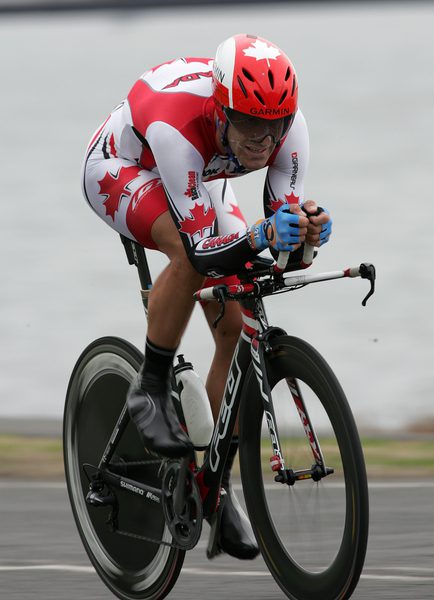Riding against the clock is something that some riders are definitely better than others. Sure, you can work on your position and get all the latest gear, but learning how to pace yourself is the most important aspect of the event. Go out too slow, you’ll lose time. If you go out too hot, you’ll creep home.
The ideal pacing strategy for races anywhere from 15-40 km should use a negative split strategy where you divide the course up mentally. Start comfortably, avoiding an overly fast start. In the middle section, increase effort to a challenging level. Aim to finish with nothing left in the tank, pushing hard in the final kilometres. When you finish a time trial, you should be spent. You’ve burned all your matches and should have nothing left in the thank.
There are other factors to consider trying to master a time trial: the course. If there are climbs, know that this is won or lost. That means saving something for the hills. If you blow on the hills, you’ll lose all kinds of time. Do a course recon if possible, or even drive around so you know what you’re getting into.
A heart rate monitor or power meter will also be an important way to gauge your effort. These tools serve as vital navigational aids that will help you through the intricate balancing act of pushing boundaries without overstepping them. After a while, you will learn the “feel” of your effort, and it will prove invaluable during the actual race.
Both tools provide real-time feedback on physiological responses, and give you a direct window into the body’s exertion levels. But you need to establish your heart rate and power zones before. The best way to do that is head out and do some longer intervals.
A good time trial workout begins with a gentle warm-up, maintaining an easy pace within Zone 2 or 65 per cent HR max for 20-30 minutes. Transition into interval training while maintaining your aero position, simulating race conditions. Start each interval by adjusting your wattage between 100-108 per cent of your FTP power, or 90 per cent of your heart rate. After the initial 2 minutes, see how you’re feeling. Now you want to see if you can increase intensity or if the pace is optimal. The key is to learn how to ensure you have a consistent effort throughout. This way you can be realistic about how hard you can go when you do the time trial.
Learning to time trial, well, takes time–but it’s a great skill not only for races against the clock, but group rides or…
Click Here to Read the Full Original Article at Canadian Cycling Magazine…

